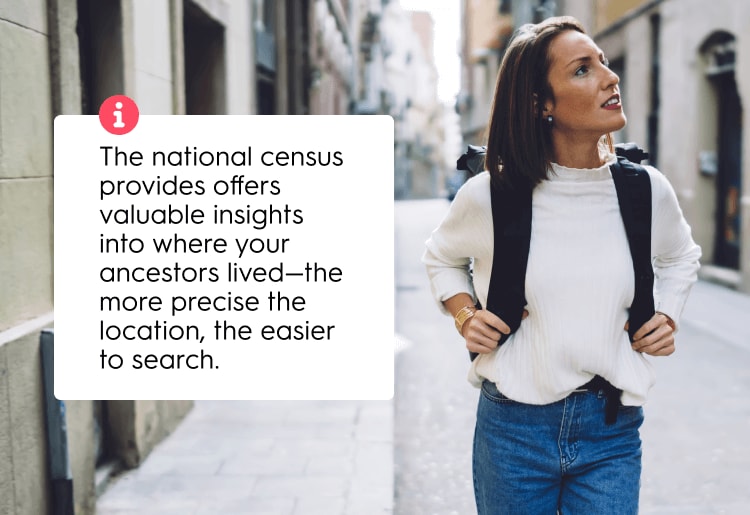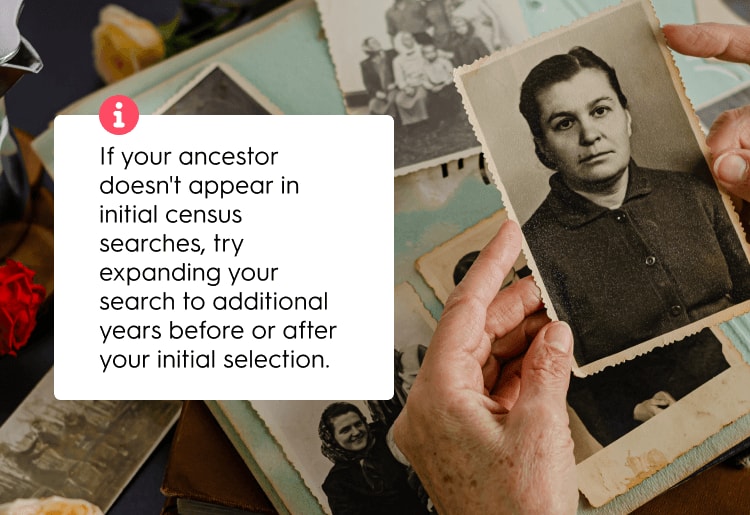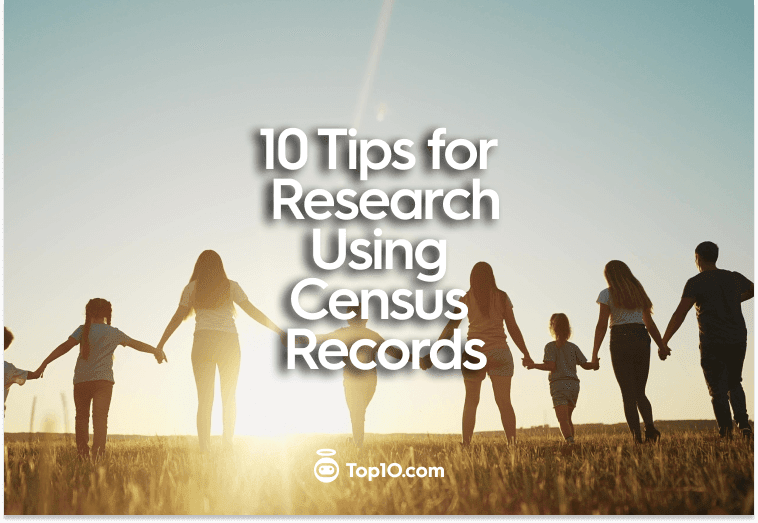Aside from DNA testing, census records are indispensable for researching our origins.
Census records are undeniably valuable for anyone conducting family history research—and to get the most from them, you need to know where to start.
The following ten strategies can help you sift through the currently available records to find the most relevant information.
1. Find Out Where the Census Was Taken
Whether your family immigrated to the United States many generations ago or more recently, their country of origin's census records can offer valuable clues regarding your family history.
The first step is to identify the country where your ancestors lived, and the years they lived there. This lets you pinpoint where to look for more details in the census records. If your ancestor lived in the United States, you’d also need to know the state and county.
Next, you can narrow your search to specific years. For example, if you’re looking for someone who lived in New York in 1900, search for New York census records within five years of that period.
Investigating census records from different years can help you piece together your ancestors’ stories and understand how to create your family tree.
2. Pinpoint the Exact Place Your Ancestor Lived
The national census is not just an excellent source of ancestral information for general locales, it can also reveal valuable insights if you know the particular place your forefather (or mother) lived. The more accurate the location, the easier the search.
You should be able to find their place of residence on the back of the census page, or you can search by address on websites such as AncestryDNA and MyHeritageDNA.

3. Search Mortality Schedules
Mortality schedules are annual registers that list the personal information of anyone who has become deceased between June 1st through May 31st in the year preceding a census. They’re a useful resource to find ancestors who don’t appear in the official population count.
To search mortality schedules, check out indexes like the AncestryDNA database. Then, find your ancestor’s name and their entry, which will include their age, place of birth, cause of death, and other important information.
Note that not all families will have reported deaths amongst their kin. Mortality schedules are not exhaustive and some of the deceased won’t be listed.
4. Check Alternatives Spellings for Your Ancestor’s Name
Occasionally, census officials may record names incorrectly. It’s crucial that while you search, you try looking for different variations of your ancestor’s name. For example, “Mary” may be spelled “Mari,” “Marie,” and even “Mary Ann." For “Smith,” try “Smyth” and “Smithers.”
When you find your ancestor in the census records, take note of the recorded spelling and use it when searching for other documents.
» Take a look at the most common last names in America.
5. Try Looking for Other Relatives
While researching your family history, you may need more leads to a specific ancestor. Try searching for other relatives to track down the person you were initially set on finding.
Census records often list entire households, so you can find more information on your forebearer by looking for people they shared a home with. Try researching siblings, children, or other relatives living in the same household and see what additional information you can find.
6. Search the Soundex Indexing System
The Soundex Indexing System is a coded platform that catalogs last names by their sound - not spelling. Developed in the early 1900s, the Soundex Indexing System is useful when searching for ancestors with uncommon or unconventionally spelled names.
You must know how to read Soundex codes to use the Soundex Indexing System. Each code consists of a letter followed by three numbers. The letter correlates to the first letter of the indexed surname, and the three numbers represent the following three consonants in the surname. For example, a name like Simkac would have the code S-522一S followed by 5 for the M, 2 for the K, and 2 for the C). The code does not include any vowels and excludes certain consonants, such as H and W.

After you’ve determined the Soundex code for a surname, you can search for records in the census data. The Census Bureau’s online tool allows you to search for documents by Soundex code. You can also find Soundex-coded censuses on microfilm at many libraries and archives.
7. Use the Wildcard Search Option
When searching census records, replace letters with other characters—such as an asterisk (*), or question mark (?)—so the search results catch alternative spellings.
For example, if you are looking for the surname Smith, type in "Sm?th?" Results you may get include “Smyth” or “Smithe”.
8. Filter Your Results
Census records are extensive and packed with tons of information on many individuals. Filtering results by date, location, and record type narrows the options down to the most relevant.
Choose the year—or range of years—when your ancestor lived. You can further refine your search by selecting an array of years to discover family changes over time, like marriages, births, and deaths.
Apply a method similar to the results by location. Choose the country, state, or county in which your ancestors lived. By pinpointing location and tracking movements over time, you can expand the research to include local records, such as school and hospital records.
9. Browse Through the Family History Library
The Family History Library (FHL) is a collection of census records from all over the world, making it one of the most valuable resources for researching family history.
Search for your ancestor’s name in the online catalog to access their records. Then click the link to access their record. If you can’t find your family member’s name in the catalog, search by place of birth, marriage, or death.
The census record will have informative data to help you continue your research, so keep a pen and paper handy to take notes.
» Looking for a way to organize your family history? Here are the best online family tree builders.
10. Scan Multiple Census Years
If you know when your ancestor was alive, select several census years and scan them all simultaneously. For example, if you think this person was born around 1810, review censuses from 1800 to 1840.
Your ancestor may only appear in some censuses, so don’t be surprised if they don’t appear in the first batch. Try expanding your search to include additional years before or after the ones you initially selected.

Putting the Pieces Together
Diving into family history through census records is key to uncovering our roots. By pinpointing ancestors' locations, exploring name variations, and utilizing resources like the Soundex system and Family History Library, we weave our family's intricate tapestry. The census-searching listed above strategies are not just about finding names but about connecting with our past creatively and precisely.
» Let MyHeritageDNA or AncestryDNA help you create a detailed family tree today.
